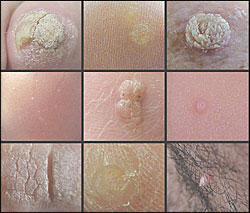
Am Fam Physician. 2003;67(6):1167

If you open your journal to page 1327, you'll find one of AFP's most popular departments featuring summaries of research from the literature. In this issue, you will find that “Tips from Other Journals” have a new companion: “POEMs.”
An editorial on page 1196 by Allen F. Shaughnessy, Pharm.D., and Jay Siwek, M.D., introduces the concept of POEMs, which stands for Patient-Oriented Evidence that Matters. POEMs are similar to “Tips” in that they summarize research published in other medical journals, but POEMs are selected according to a rigorous methodology (see page1328). To qualify as a POEM, a study must meet three criteria: (1) Did the research focus on an outcome that patients care about (such as morbidity, mortality, or quality of life)? (2) Is the problem that has been studied common and is the intervention feasible? (3) Does the information have the potential to change the practice of many physicians?
POEMs are selected from a review of more than 100 clinical journals. Every month a team of family physicians and investigators look for studies with results that are immediately applicable to practice. The research is then evaluated for validity, and studies that are deemed valid are summarized and compiled into InfoRetriever, part of the InfoPOEMs Clinical Awareness System (www.InfoPOEMs.com).
POEMs have a different format and structure than Tips. POEMs answer a clinical question, include a level-of-evidence score, and are always accompanied by editorial commentary. A comparison between POEMs and Tips is provided in a table on page 1199.
Dr. Shaughnessy, who was added recently to AFP's masthead as a contributing editor for the “Clinical Pharmacology” series, also serves as senior medical editor for InfoPOEM, Inc., and as director of research at the Harrisburg Family Practice Residency in Harrisburg, Pa. Dr. Shaughnessy and AFP's editor Jay Siwek, M.D., plan to publish four or more POEMs in each issue of AFP.
This issue includes eight POEMs that answer the following clinical questions:
What is the predictive value of alarm symptoms in patients with dyspepsia? (See bottom line on page 1327.)
Are patients with iron deficiency anemia at increased risk of also having a gastrointestinal malignancy? (See bottom line on page 1339.)
Is an early invasive strategy cost-effective in the treatment of unstable angina and non-ST-segment elevation myocardial infarction? (See bottom line on page 1330.)
What is the natural history of patients with uncomplicated, symptomatic gallstone disease? (See bottom line on page 1328.)
Does a normal D-dimer level exclude pulmonary embolism? (See bottom line on page 1333.)
Is physical therapy an effective adjunct to medical care or chiropractic care in patients with low back pain? (See bottom line on page 1336.)
How accurate is a rapid screening test for dementia? (See bottom line on page 1336.)
Does stretching before exercise decrease muscle soreness or injury? (See bottom line on page 1333.)
Our bottom line is that we hope you like POEMs. Let us know what you think—drop us a line atafpedit@aafp.org or call me at 800-274-2237, ext. 5108.